Abstract
Bradykinin is a potent constrictor of the human umbilical artery and vein and the ductus arteriosus of the lamb in vitro at oxygen tensions above 40 mm Hg (comparable to those in the newborn infant). Bradykinin is also capable of producing remarkable dilatation of the pulmonary vasculature of the lamb. Theoretically, kinins are capable of effecting some of the rapid circulatory changes required of the neonate. The present study was undertaken to investigate the role of kinins as mediators of such changes.
The concentration of bradykinin in the cord blood of 56 newborn infants at the time of birth was significantly higher than the blood level in adult subjects (12.8 ± 4.3 ng/ml compared with 2.0 ng/ml or less). Cord arterial blood contained inactive kinin precursor (kininogen) and inactive kinin-releasing enzyme (kallikrein). Plasma kallikrein was activated, with subsequent kinin formation and kininogen depletion, by exposure to neonatal granulocytes or by a decrease in the temperature of cord blood from 37 to 27°C. A comparable decrease in the temperature of umbilical arterial blood occurs at the time of birth.
Activation of kallikrein by neonatal granulocytes was dependent on cell concentration and required oxygen tensions comparable to those in the neonate but above the range in the fetus. Granulocytes of the neonate, unlike those of adult subjects, lacked kininase activity.
Thus, bradykinin can constrict and dilate vessels as required for the transition of fetal to neonatal circulation. Bradykinin can be produced in plasma of the newborn by decreases in temperature, such as occur in the umbilical blood at birth, and by exposure to granulocytes which are present in the circulation in increased numbers shortly after birth. We propose that bradykinin is produced at birth and may be a mediator of neonatal circulatory changes.
Full text
PDF
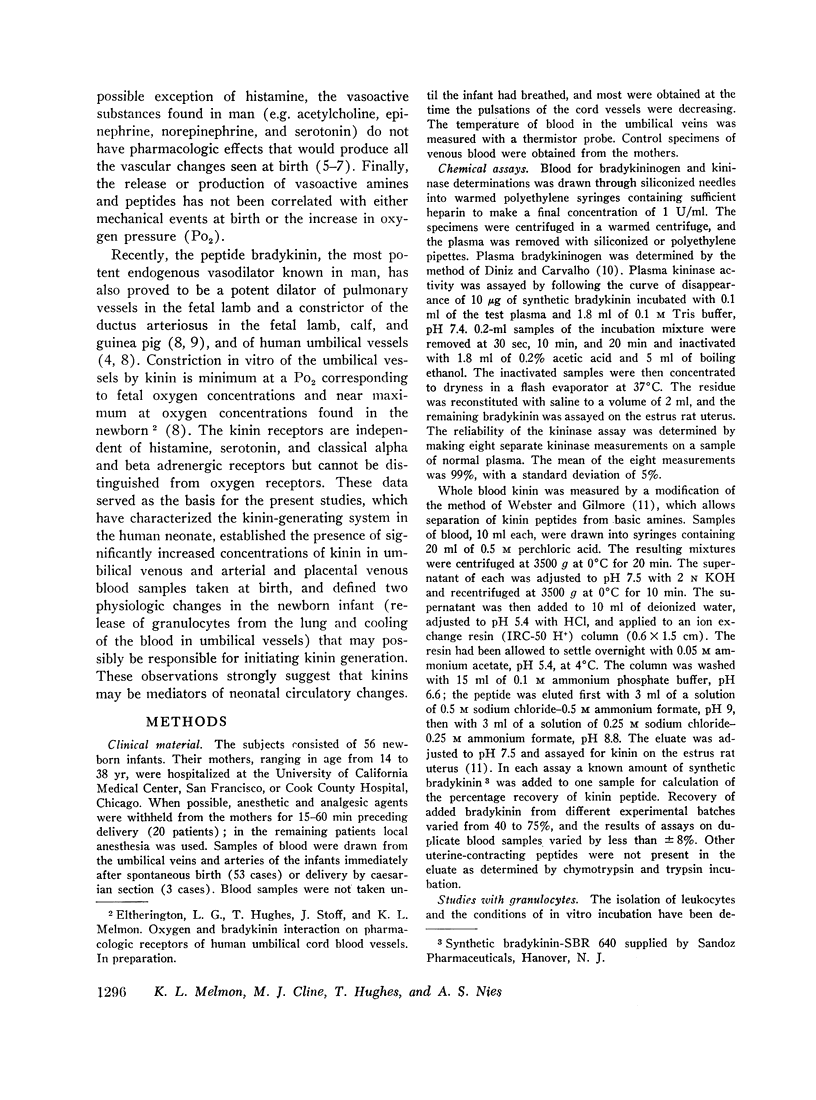
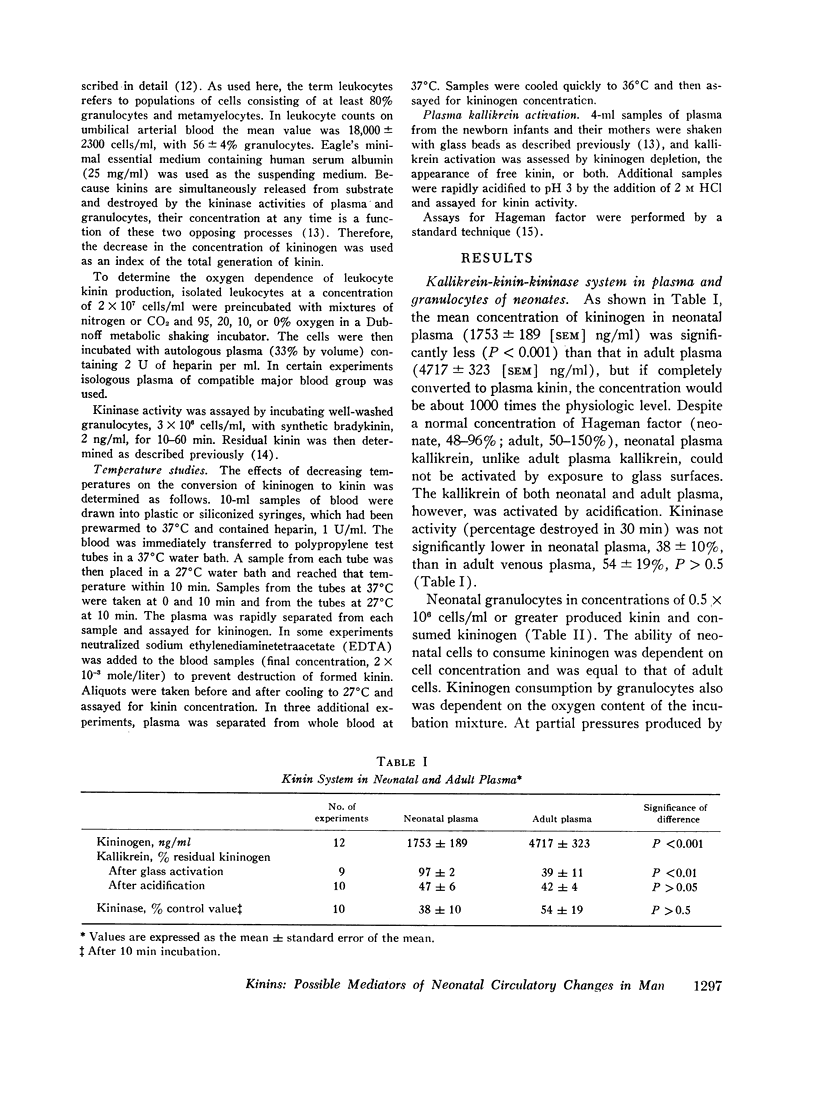
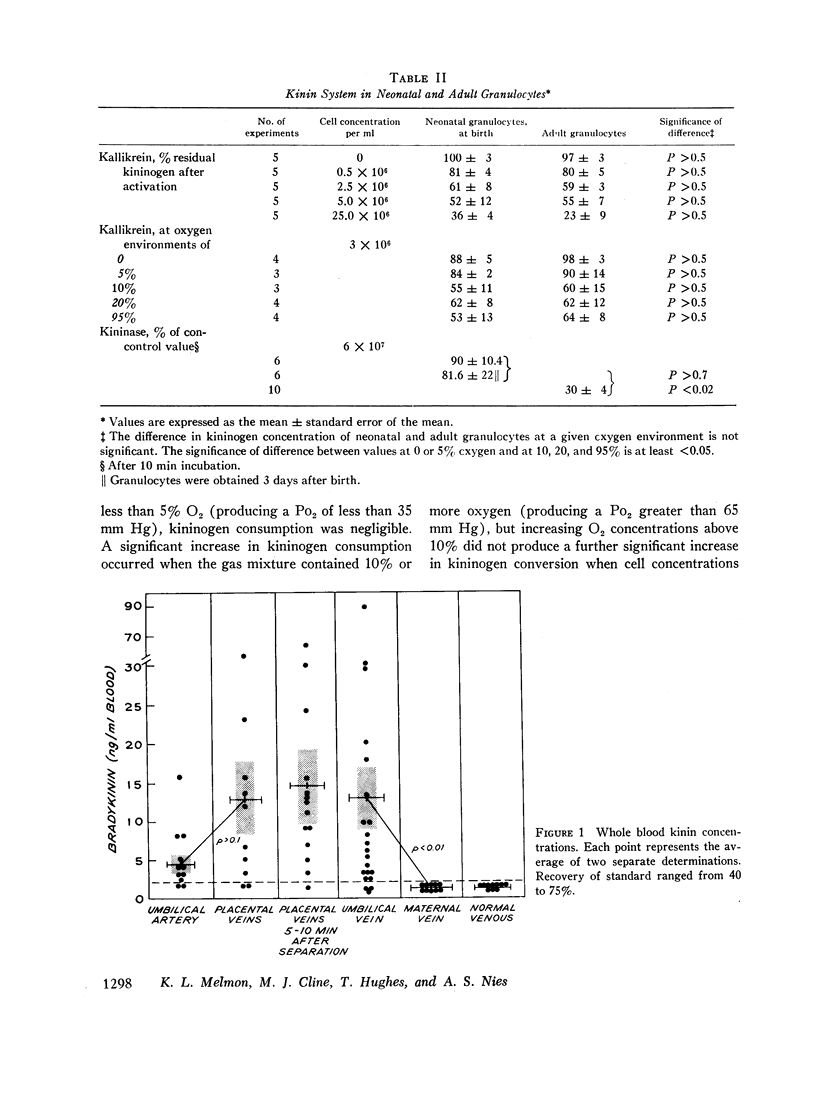
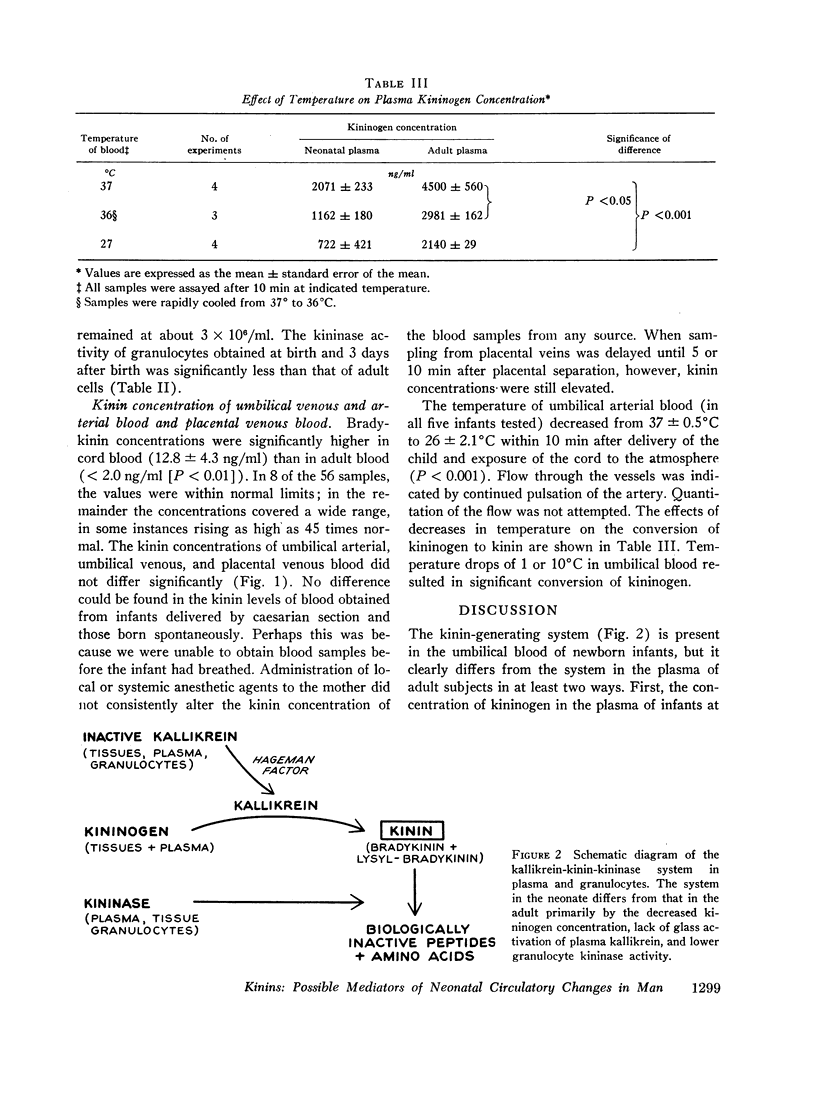
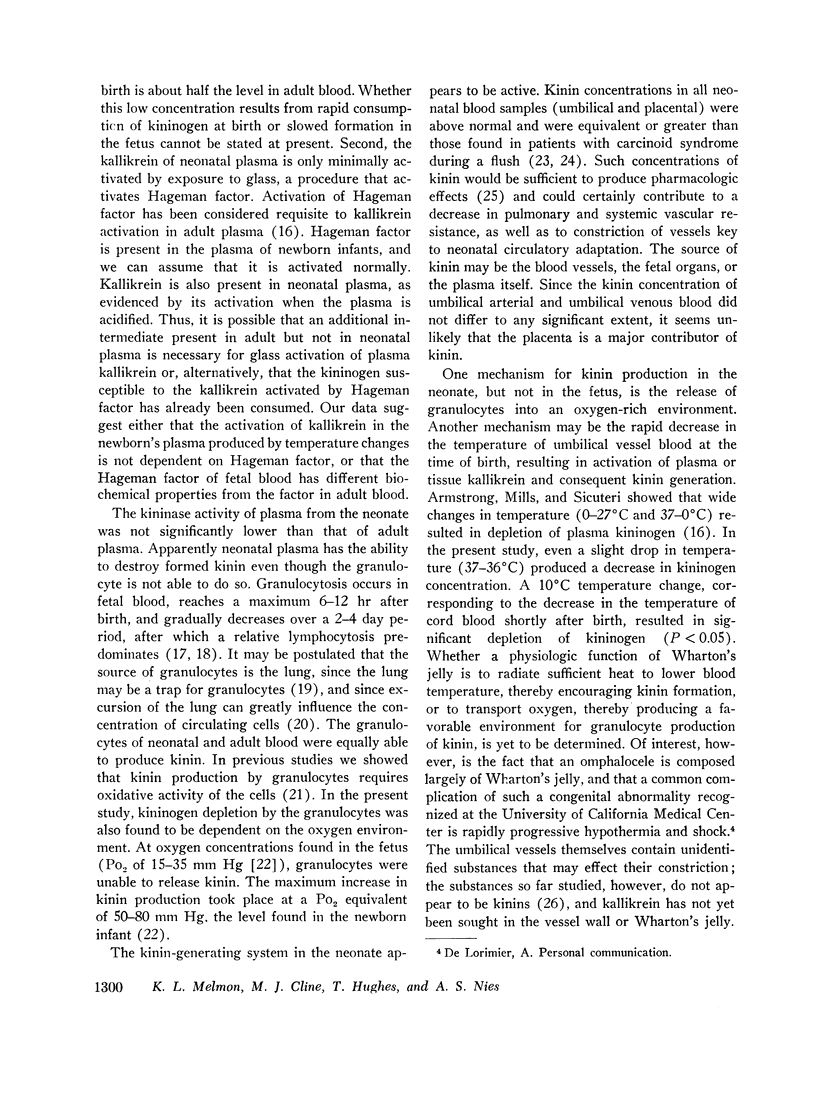

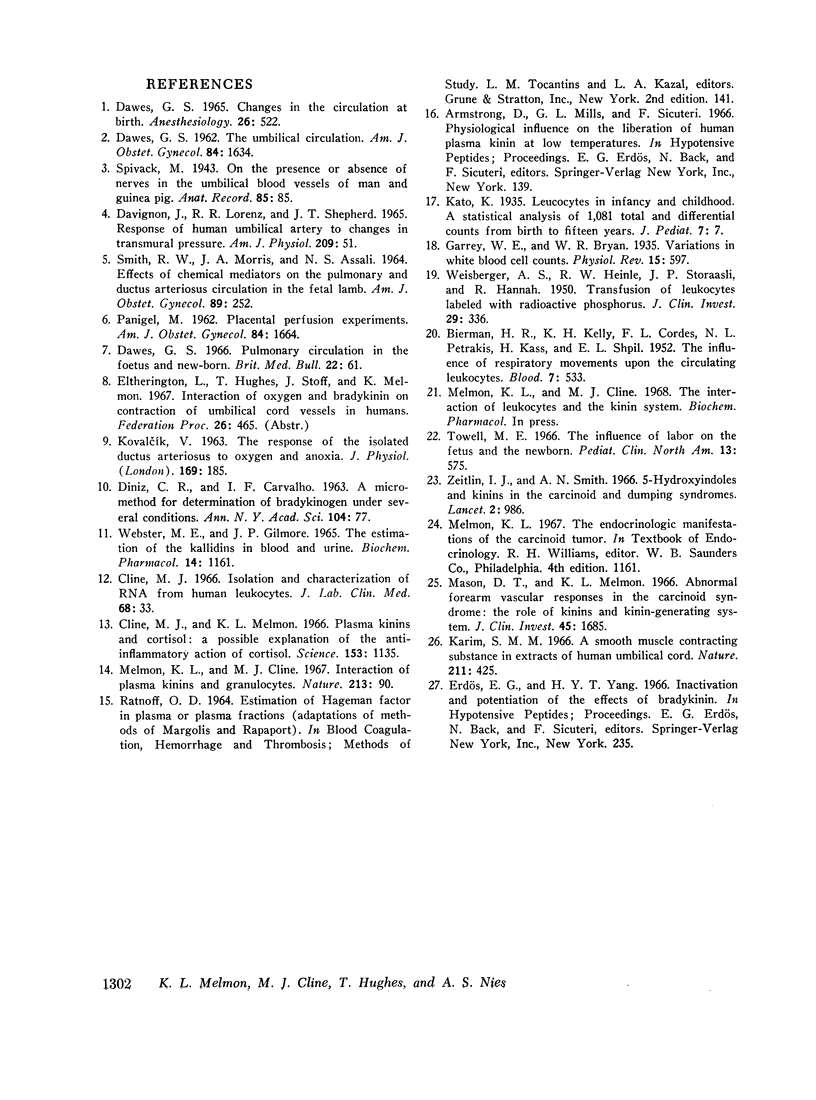
Images in this article
Selected References
These references are in PubMed. This may not be the complete list of references from this article.
- BIERMAN H. R., KELLY K. H., CORDES F. L., PETRAKIS N. L., KASS H., SHPIL E. L. The influence of respiratory movements upon the circulating leukocytes. Blood. 1952 May;7(5):533–544. [PubMed] [Google Scholar]
- Cline M. J. Isolation and characterization of RNA from human leukocytes. J Lab Clin Med. 1966 Jul;68(1):33–46. [PubMed] [Google Scholar]
- Cline M. J., Melmon K. L. Plasma kinins and cortisol: a possible explanation of the anti-inflammatory action of cortisol. Science. 1966 Sep 2;153(3740):1135–1138. doi: 10.1126/science.153.3740.1135. [DOI] [PubMed] [Google Scholar]
- DAWES G. S. CHANGES IN THE CIRCULATION AT BIRTH. Anesthesiology. 1965 Jul-Aug;26:522–530. doi: 10.1097/00000542-196507000-00016. [DOI] [PubMed] [Google Scholar]
- DAWES G. S. The umbilical circulation. Am J Obstet Gynecol. 1962 Dec 1;84:1634–1648. doi: 10.1016/0002-9378(62)90007-8. [DOI] [PubMed] [Google Scholar]
- DINIZ C. R., CARVALHO I. F. A micromethod for determination of bradykininogen under several conditions. Ann N Y Acad Sci. 1963 Feb 4;104:77–89. doi: 10.1111/j.1749-6632.1963.tb17654.x. [DOI] [PubMed] [Google Scholar]
- Dawes G. S. Pulmonary circulation in the foetus and new-born. Br Med Bull. 1966 Jan;22(1):61–65. doi: 10.1093/oxfordjournals.bmb.a070439. [DOI] [PubMed] [Google Scholar]
- Karim S. M. A smooth muscle contracting substance in extracts of human umbilical cord. Nature. 1966 Jul 23;211(5047):425–425. doi: 10.1038/211425a0. [DOI] [PubMed] [Google Scholar]
- Mason D. T., Melmon K. L. Abnormal forearm vascular responses in the carcinoid syndrome: the role of kinisns and kinin-generating system. J Clin Invest. 1966 Nov;45(11):1685–1699. doi: 10.1172/JCI105475. [DOI] [PMC free article] [PubMed] [Google Scholar]
- SMITH R. W., MORRIS J. A., ASSALI N. S. EFFECTS OF CHEMICAL MEDIATORS ON THE PULMONARY AND DUCTUS ARTERIOSUS CIRCULATION IN THE FETAL LAMB. Am J Obstet Gynecol. 1964 May 15;89:252–260. doi: 10.1016/0002-9378(64)90718-5. [DOI] [PubMed] [Google Scholar]
- Towell M. E. The influence of labor on the fetus and the newborn. Pediatr Clin North Am. 1966 Aug;13(3):575–598. doi: 10.1016/s0031-3955(16)31870-3. [DOI] [PubMed] [Google Scholar]
- Webster M. E., Gilmore J. P. The estimation of the kallidins in blood and urine. Biochem Pharmacol. 1965 Jul;14(7):1161–1163. doi: 10.1016/0006-2952(65)90046-8. [DOI] [PubMed] [Google Scholar]
- Weisberger A. S., Heinle R. W., Storaasli J. P., Hannah R. TRANSFUSION OF LEUKOCYTES LABELED WITH RADIOACTIVE PHOSPHORUS. J Clin Invest. 1950 Mar;29(3):336–341. doi: 10.1172/JCI102262. [DOI] [PMC free article] [PubMed] [Google Scholar]
- Zeitlin I. J., Smith A. N. 5-hydroxyindoles and kinins in the carcinoid and dumping syndromes. Lancet. 1966 Nov 5;2(7471):986–991. doi: 10.1016/s0140-6736(66)92924-2. [DOI] [PubMed] [Google Scholar]



